Focal length is an important specification that has a huge impact on astrophotography.
Whether using a lens or a telescope, the focal length will determine what you can photograph.
But what is the best focal length for astrophotography?
To find objective data, I looked at nearly 700 images shortlisted for Astronomy Photographer of the Year in the past five years and analyzed what were the focal lengths of the lenses and telescopes used for:
- Milky Way Photography
- Deep Space Astrophotography
- Planetary Imaging
From this, we can see what the most successfully used focal lengths were for each type of astrophotography.
Let’s get into it!
1. Best Focal Length for Milky Way Photography
Photographing the Milky Way over the Earth is the most common type of what is known as landscape astrophotography.
It is usually done with a regular DSLR or mirrorless camera and lens.
I categorized 685 images shortlisted for the Astronomy Photographer of the Year competition in the past five years as either:
- Landscape
- Deep Sky
- Planetary
In this period there were 213 landscape astrophotography images shortlisted that we can examine to see what gear was used.
From these we can see the most commonly (and successfully) used lens focal lengths:
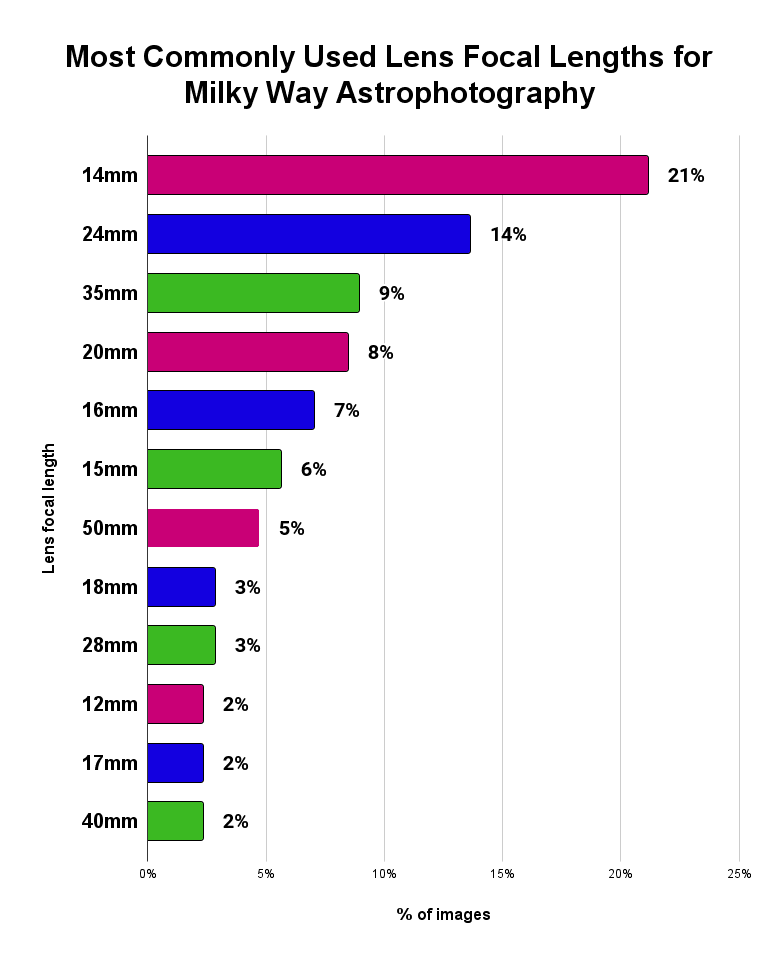
As you can see, 14mm is the most successfully used lens focal length for milky way astrophotography.
This is likely for two reasons:
- 14mm is wide-angle. This enables you to capture a wide expanse of the night sky – especially if using a full-frame sensor camera (recommended)
- There are great fast-aperture 14mm lenses available for different budgets. Two very popular models for Milky Way astrophotography are the premium Sigma Art 14mm F/1.8 and the budget Rokinon 14mm F/2.8.
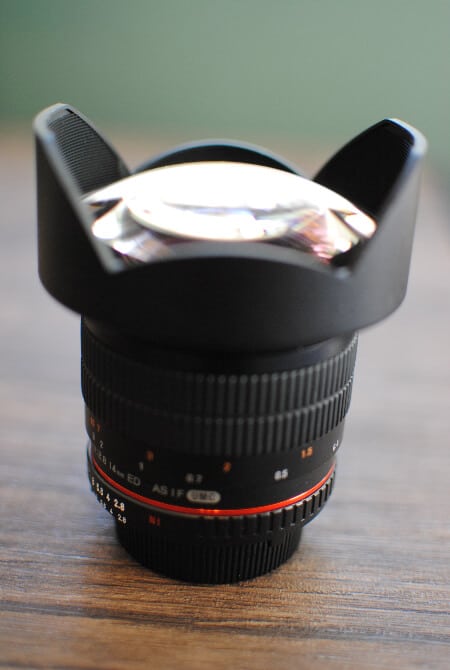
We have an article on the best 14mm lenses if you’d like to see different options for Canon, Nikon, Sony, and more cameras.
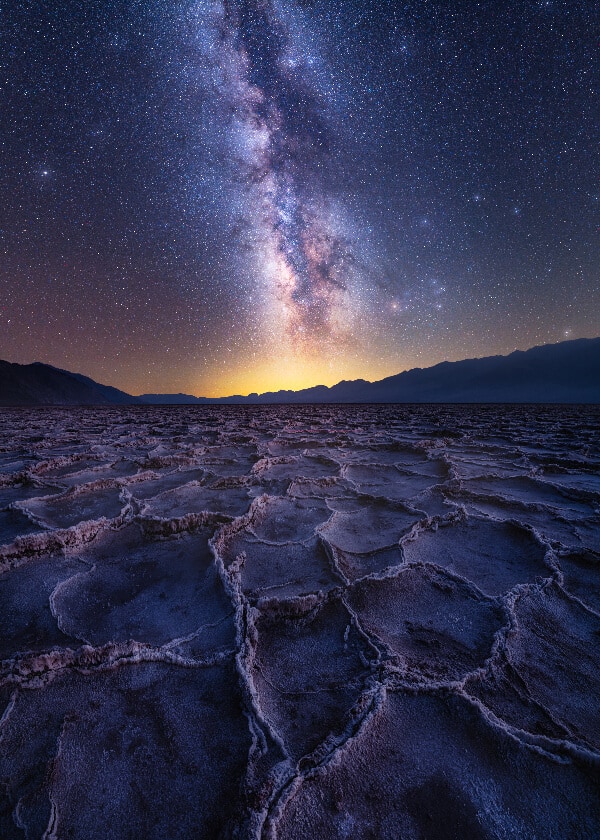
The next most popular focal lengths are:
- 24mm – Again, there are some great lenses in this focal length for astrophotography, like the Sony FE 24mm F/1.4.
- 35mm – These are great all round lenses and make a great budget option for astrophotography. Lenses like the Nikon 35mm f/1.8 are brilliant and cheap.
The advantage of a 35mm lens is that you may already own it for daytime photography and so don’t need a dedicated astrophotography lens.
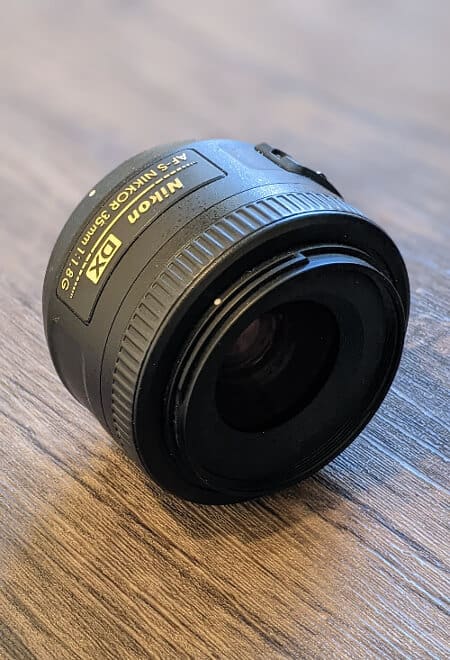
However, it is not as wide as the shorter focal length lenses (the longer the focal length, the narrower the field of view) and so limits the amount of sky you can capture. Some get past this by stitching together multiple shots into Milky Way panoramas with narrower lenses like 35mm.
You will want shorter focal lengths if using an APS-C sensor camera as it will crop the images narrower.
For example, a 14mm lens with a full-frame camera shoots at 14mm, but with an APS-C camera it is effectively 22mm. Therefore, a 24mm lens may be too narrow (depending, of course, on what you are shooting).
For more information on Milky Way and landscape astrophotography see:
- Best Lenses for Astrophotography
- Introduction to Landscape Astrophotography
- How to Photograph the Milky Way
This video from Alyn Wallace about lenses for landscape astrophotography is also great and discusses using 14mm, 24mm and 50mm focal lengths:
2. Best Focal Length for Deep Space Astrophotography
You can see here the most successfully used telescopes for deep sky imaging:
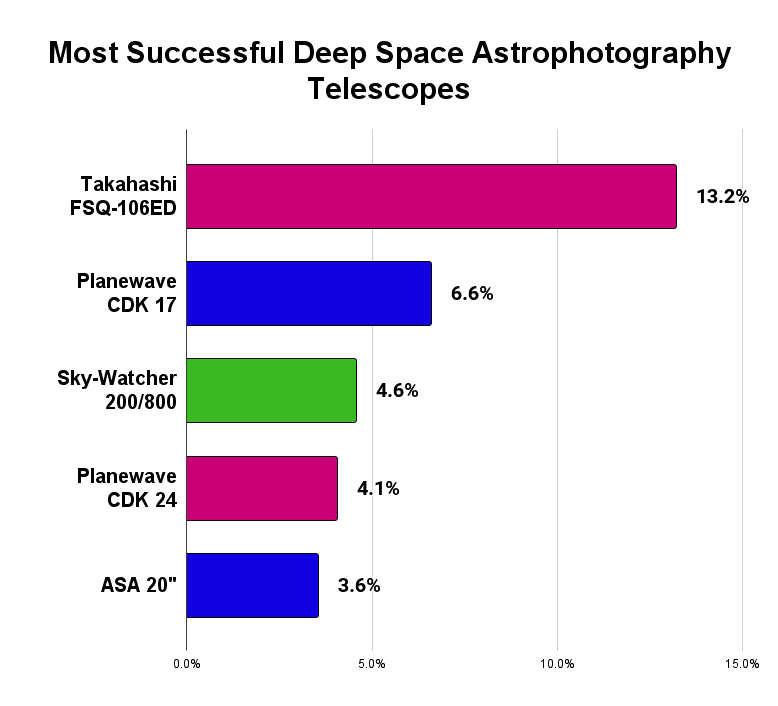
However, looking at the competition data for the best focal length for deep space astrophotography is a bit harder.
This is because deep sky imaging is usually done with a telescope and dedicated astronomy camera, but there is a greater range of telescopes used that do not have a common focal length. I.e. there are many different 14mm camera lenses, but each telescope tends to have a different focal length and will depend on the type of telescope too (for example, apochromatic refractor, Newtonian astrograph, etc.)
What we can do it look at the top five telescopes used in 197 shortlisted deep sky images and compare the focal lengths:
| Telescope | Focal Length | % |
|---|---|---|
| Takahashi FSQ-106 ED | 530mm | 13% |
| Planewave CDK 17 | 2939mm | 7% |
| Sky-Watcher 200/800 | 800mm | 5% |
| Planewave CDK 24 | 3974mm | 4% |
| ASA 20″ Astrograph | 1900mm | 4% |
The Takahashi FSQ-106ED is an apochromatic refractor that benefits from being relatively small and light. Its focal length, and aperture, are relatively small compared to the other big telescopes on that list. However, it is substantially cheaper than the Planewave CDK models and the ASA 20.
How it is used with success is to combine with a high-resolution CCD or CMOS camera and then take long exposures which can then be cropped into the Deep Sky Object (DSO) whilst still being relatively high resolution (given the very high resolution of the camera).
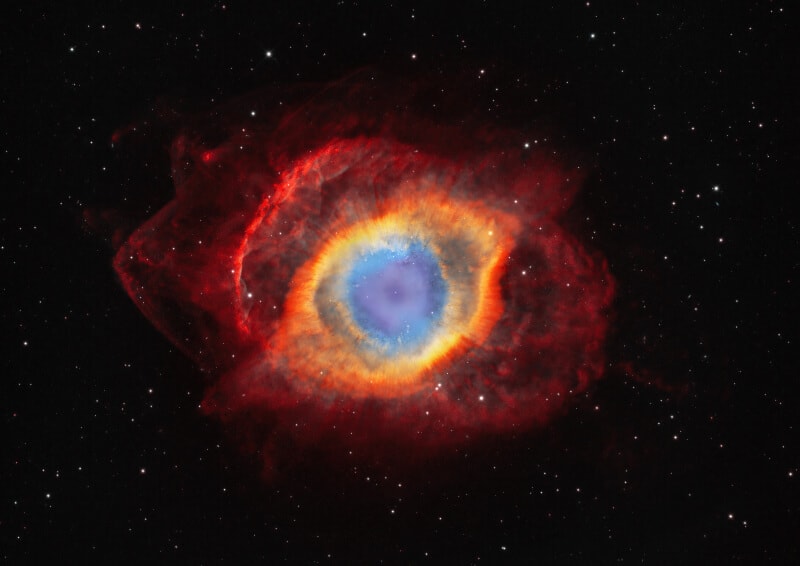
In general, deep space astrophotography can be done with shorter focal lengths when adopting these techniques and this also allows the capture of larger, more widefield targets. What is more important is a fast focal ratio to enable it to capture light from these far-off, faint objects.
This is in contrast to planetary imaging, where long focal lengths are needed – more on this below.
For detail on deep space astrophotography telescopes and cameras, check out these articles:
- Best Telescopes for Astrophotography
- Best CCD and CMOS Cameras for Astrophotography
- Best Focal Ratio for Astrophotography
3. Best Focal Length for Planetary Imaging
There were 133 planetary images shortlisted that we can examine.
You can see here the most successful telescope models:

As you can see these telescopes tend to have longer focal lengths:
| Telescope | Focal Length | % |
|---|---|---|
| Celestron C11 | 2800mm | 11% |
| Celestron C14 | 3910mm | 10% |
| ASA 12” Astrograph | 1080mm | 4% |
| Celestron C8 | 2032mm | 4% |
| ASA EQ1000 RC | 6760mm | 3% |
| Celestron C14 EdgeHD | 3910mm | 3% |
This is because a longer focal length is ideal for planetary imaging where you want a narrow field of view and high magnification.
A fast focal ratio is less important compared to deep sky imaging, due to the relative brightness of the planets over DSOs.
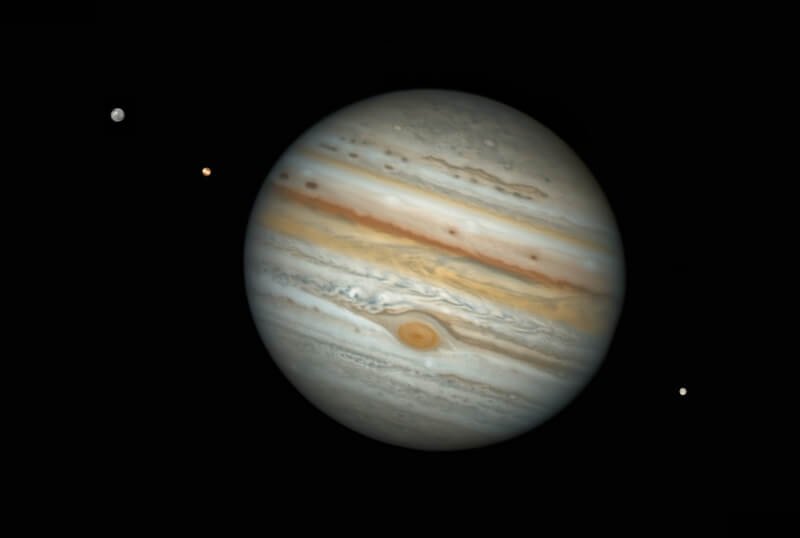
Long focal length telescopes, like Celestron’s Schmidt-Cassegrain range, are the most popular choice for planetary imaging.
For more detail on planetary imaging, see:
FAQs: Astrophotography Focal Length
Is 24mm wide enough for Milky Way?
A 24mm lens combined with a full-frame sensor camera is wide enough for Milky Way photography and can yield spectacular results.
Is longer focal length better for astrophotography?
Longer focal length is not necessarily better for astrophotography.
A long focal length telescope will have a narrow field of view which will be great for planetary imaging, but not necessarily for deep sky astrophotography.
Verdict: What is the Best Focal Length for Astrophotography?
Overall, what is a good focal length for astrophotography depends on what you are shooting:
- For landscape astrophotography with a regular DSLR or mirrorless camera, you want a lens with a wide (short) focal length of around 14mm to 24mm.
- For planetary imaging with a telescope, you want a long focal length for high magnification and a narrow field of view.
- For deep sky imaging, you can use telescopes with shorter focal lengths for widefield imaging. A fast focal ratio is a more important specification with regard to its performance for DSO imaging.
I hope this data helped shed some light on focal length and astrophotography for you.
If you want to read more about any of the topics covered in this article, please follow the links throughout and below.
Let me know if you have any questions in the comments.
Related articles:


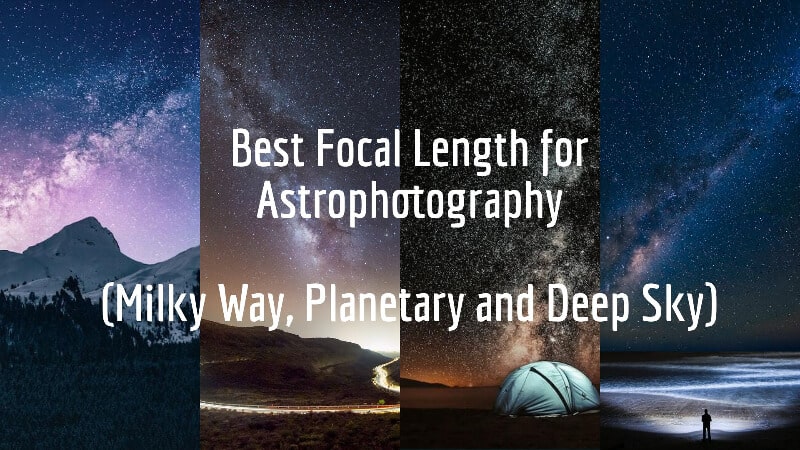

Great article! I would love to get your opinion on the traditional lenses from Canon, Sony and Nikon as compared to the telescopes. The Takahashi has a focal length of 530 mm and the companies mentioned offer 400mm, 600mm and 800mm lenses, which I believe are capable of matching or exceeding the resolution of the telescopes and are faster than the telescopes. Nikon has the new Z lenses, which are amazing. Nikon’s 400mm and 600mm lenses have built in 1.4x extenders offering an option unique for astrophotography. What do you think about these choices as compared to telescopes? Thanks and I look forward to your reply.
Hi Frank, great question. I’m sure those lenses can be put to great use for deep sky and planetary astrophotography and, as you say, the key specs are compatible. However, I think if you are buying specifically for astrophotography, and given how much these lenses cost, it’s better to go for the telescope that is specifically designed for that purpose. You then know that you can get all the required accessories and you can learn from others online who will share their expertise on using that telescope as part of their setup (i.e. on YouTube videos or in forums). If you buying the camera lens for other purposes, then sure, why not have a go at astrophotography with it, but i’d not buy it specifically for that purpose. Hope that helps!
You guys should trawl the shortlists for photos taken with the cheapest gear for the different catagories that give great results, that would definitely be good evidence for any beginners looking for what gear that they can both start out with and attain success with.
That’s a great idea. We’ll do that after this year’s results are released next month. Thanks!